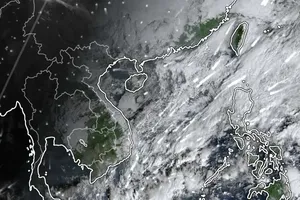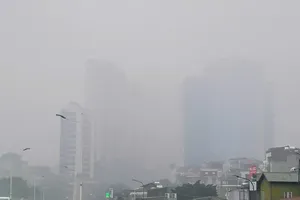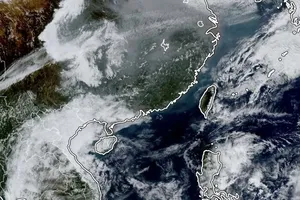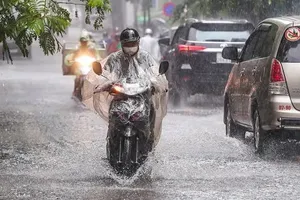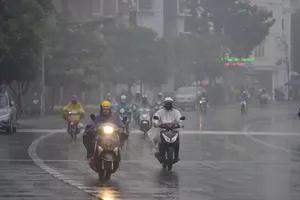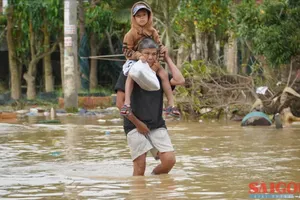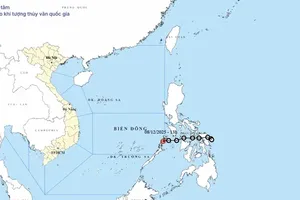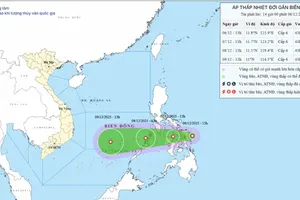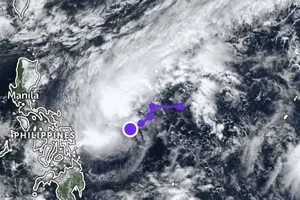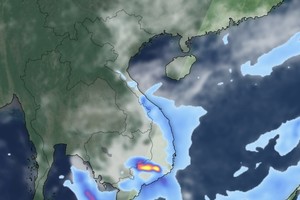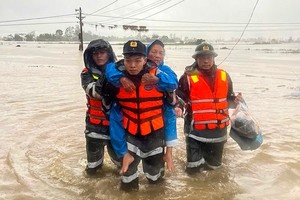
Amid to the high rainfall, floodwater is expected to rise again in the local river systems from Thua Thien- Hue to Phu Yen and Kon Tum provinces.
The natural disasters of flashflood, landslide and flooding are warned to occur in the provinces' lowland areas.
Additionally, the high rainfall has poured the huge volume of water to reservoirs which could cause reservoir unsafety.
This early morning, temperature in the north sharply dropped. Temperature in some mountainous areas as O Quy Ho (Sa Pa), Y Ty (Bat Xat) and Nam Chay (Muong Khuong) is measured at zero degree Celsius.
According to the National Hydrology Meteorology Forecast Center, the massive cold spell has continuously strengthened to the country.
Yesterday, the lowest daytime temperature reached at 12- 14 degrees Celsius in the Red Delta region, at 8-11 degrees Celsius in the mountainous areas.
Winter brings the lowest temperature in the northern high mountainous areas of Sa Pa (Lao Cai), Mau Son (Lang Son), Dong Van (Ha Giang), Pha Din, Tam Dao and Sin Ho at 1.9- 5.9 degrees Celsius.
Specially, the country’s highest peak on a height of 2,700 meters above sea surface experienced low temperature of minus two degrees Celsius while temperature in Fansipan peak (locating on a height of over 3,000 meters above sea surface) dropped down minus 5-6 degrees Celsius, even the frost occurrence in some places.
In capital of Hanoi, the lowest temperature was at 11 degrees Celsius at last night. Today, the weather condition in the area is expected to be warmer with the lowest daytime temperature at 15- 17 degrees Celsius.
The cold front brings powerful wind of level 6-8 in the Gulf of Tonkin and at level 6-7 in the territorial water of the central region.
Notably, the west wind convergence has strongly operated and caused medium- heavy rain in the northern midland and mountainous region.

